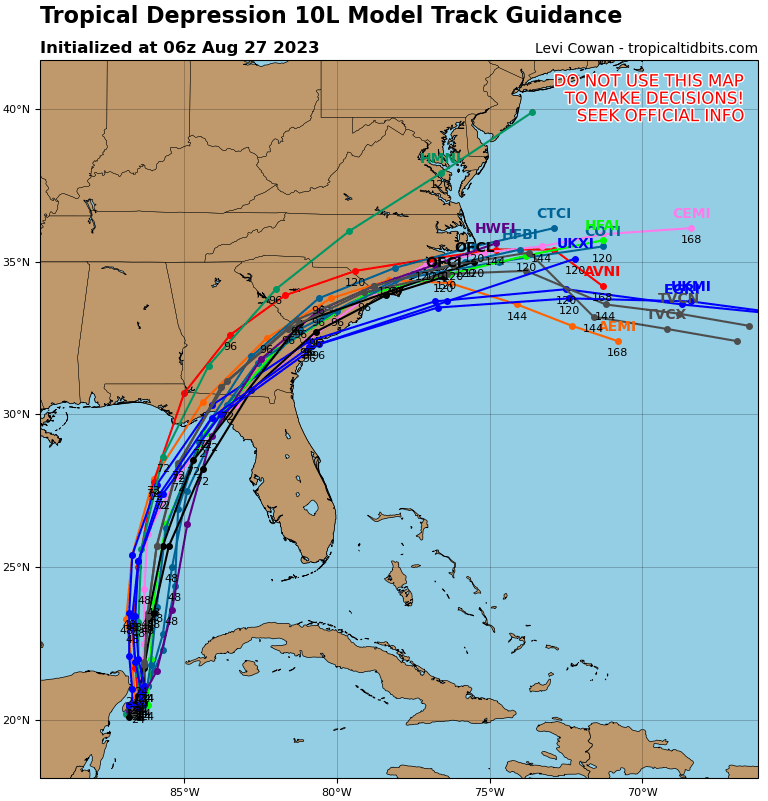This blog often discusses Supply Chain Resilience in the context of Force On Target (recent examples here and here).
The resilience of a demand and supply network often depends which targets are hit hardest. Does the target play a central or peripheral role in network flows? Is the target isolated or are many other channels and nodes dependent on the target? What proportion of network flows depend on the target?
Many of us are watching how Tropical Depression 10 will develop over the next 48 hours or so. What sort of force will hit where? This Sunday morning’s NWS discussion includes:
The very warm and deep waters of the northwestern Caribbean Sea and Gulf of Mexico should support at least gradual strengthening during the next few days, tempered by moderate shear from a flat upper-level trough. However, this trough is forecast to amplify over the western Gulf of Mexico around Tuesday, which causes the shear to decrease near the cyclone in that time frame. There’s a notable risk of rapid intensification while the system moves across the record warm eastern and northeastern Gulf of Mexico…
Below are two data-generated graphics from from the Automated Tropical Cyclone Forecast system (ATCF) via TropicalTidbits. These and more are updated periodically. It remains very early. Right-now the models — based on this system’s recent behaviors, current and forecast context, and past performance of prior systems — give us a range of Force On Target possibilities to consider. Right now the bullseye is on Florida’s Big Bend. But we know both force and target could still change.
Emergent Force
Emerging Targets
